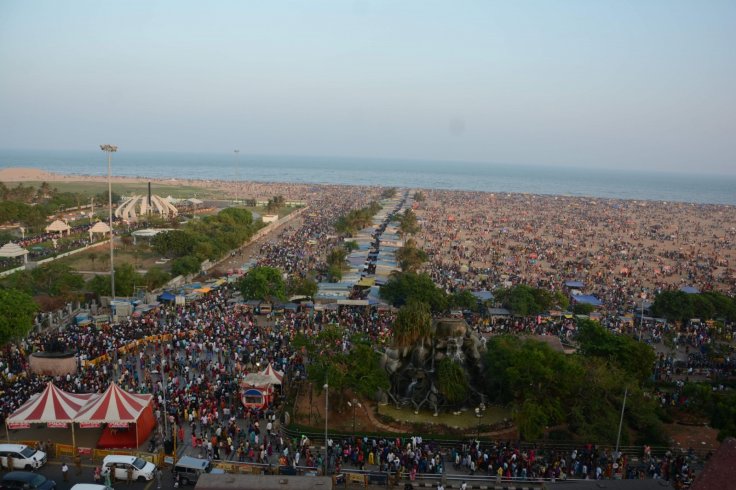
Tamilians and the world and people in Tamil Nadu in India on Sunday celebrated the harvest festival of Pongal thanking rain, sun and farm animals. People got up early, put on new clothes and went to temples.
The aroma of ghee fried cashews, almonds and cardamom filled homes as a traditional dish of rice, jaggery and Bengal gram was made.
As the ingredients of Chakarai Pongal boiled in milk, people called out 'Pongolo Pongal, Pongolo Pongal'.The mud pot or stainless steel in which the dish is cooked is decorated by tying up ginger, turmeric, sugarcane piece and banana at the neck.
The Pongal dish is offered to Sun God as thanksgiving and eaten as 'prasad'. It is made at the auspicious time and in some homes, conches are blown prior to the formal offering.People exchanged greetings and Chakarai Pongal with their neighbours.
The Pongal festivities take place over four days, the first day being Bhogi, which was Saturday, when people burn their old clothes, mats and other items. Homes are painted afresh.The second day is the main Pongal festival celebrated on the first day of the Tamil month Thai.
The third day is the Mattu Pongal when bulls and cows are bathed and their horns painted and worshipped as they play an important role in farms.
Women feed the birds with coloured rice and pray for the welfare of their brothers.In some parts of the state, Jallikattu -- a bull-taming sport -- is held.The fourth day is the Kannum Pongal -- the day to go out and meet relatives and friends, and go sight seeing.
Sankranti celebrated
Elsewhere in northern India, tens of thousands of devotees across Himachal Pradesh took a dip in rivers braving cold weather to mark the auspicious Makar Sankranti festival.
A huge gathering was seen at Tattapani, around 52 km from the state capital, and Manikaran, home to a Sikh shrine in Kullu district, for a holy dip in the Sutlej and Parvati rivers respectively.
Both Tattapani and Manikaran, known for hot springs with high sulphur concentration, witnessed a majority of devotees mainly from Punjab, Haryana, Chandigarh and Delhi.
"Every year more than 20,000 devotees are expected on Makar Sankranti," a priest at Tattapani told IANS.
Likewise, the devotees took a holy bath in Vashist temple, located on the outskirts of the popular tourist resort Manali.
The temple is situated on the left bank of Beas river, also known for its hot springs.
Makar Sankranti, a major harvest festival celebrated in various parts of the country, also marks the beginning of warmer and longer days compared to the nights.









